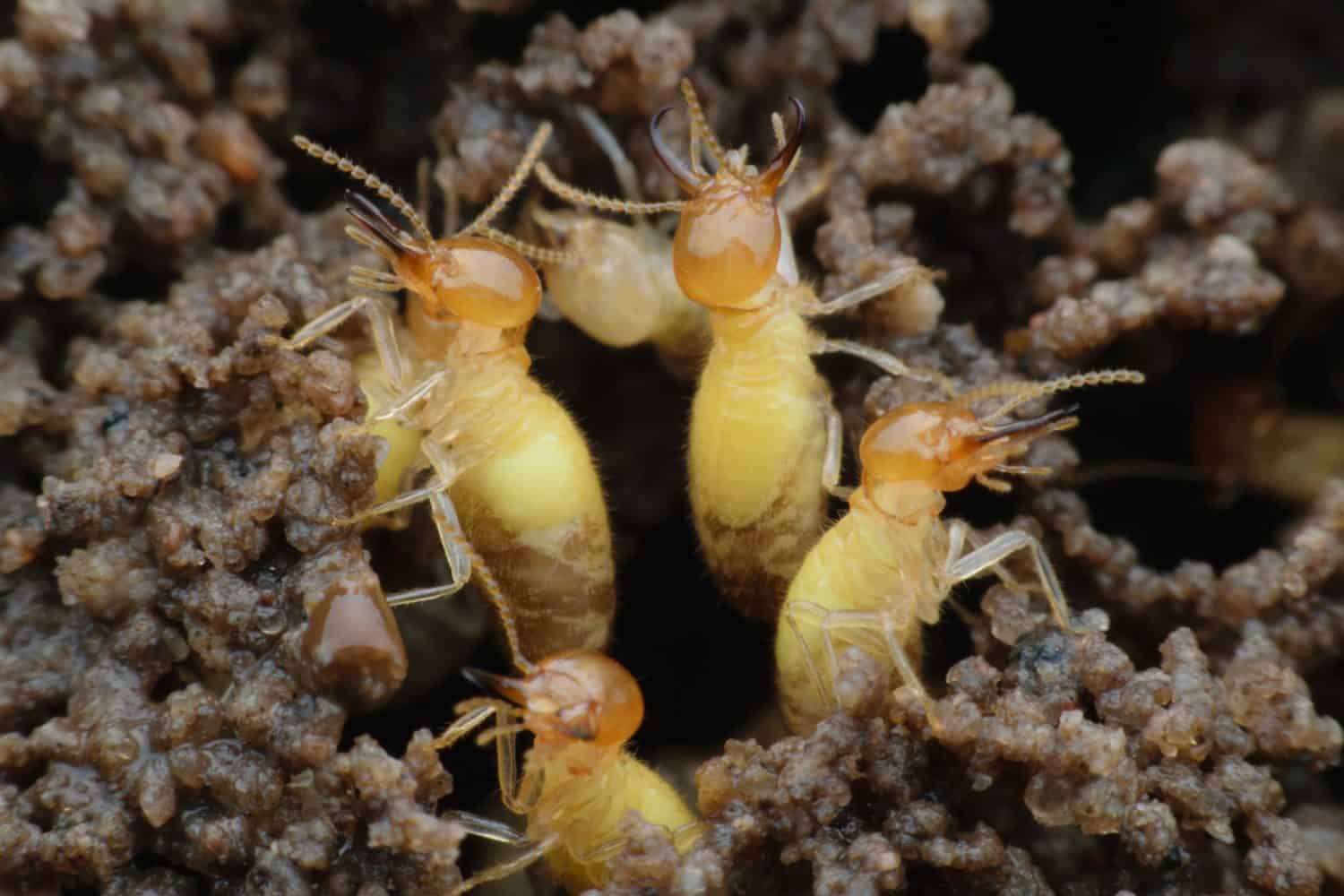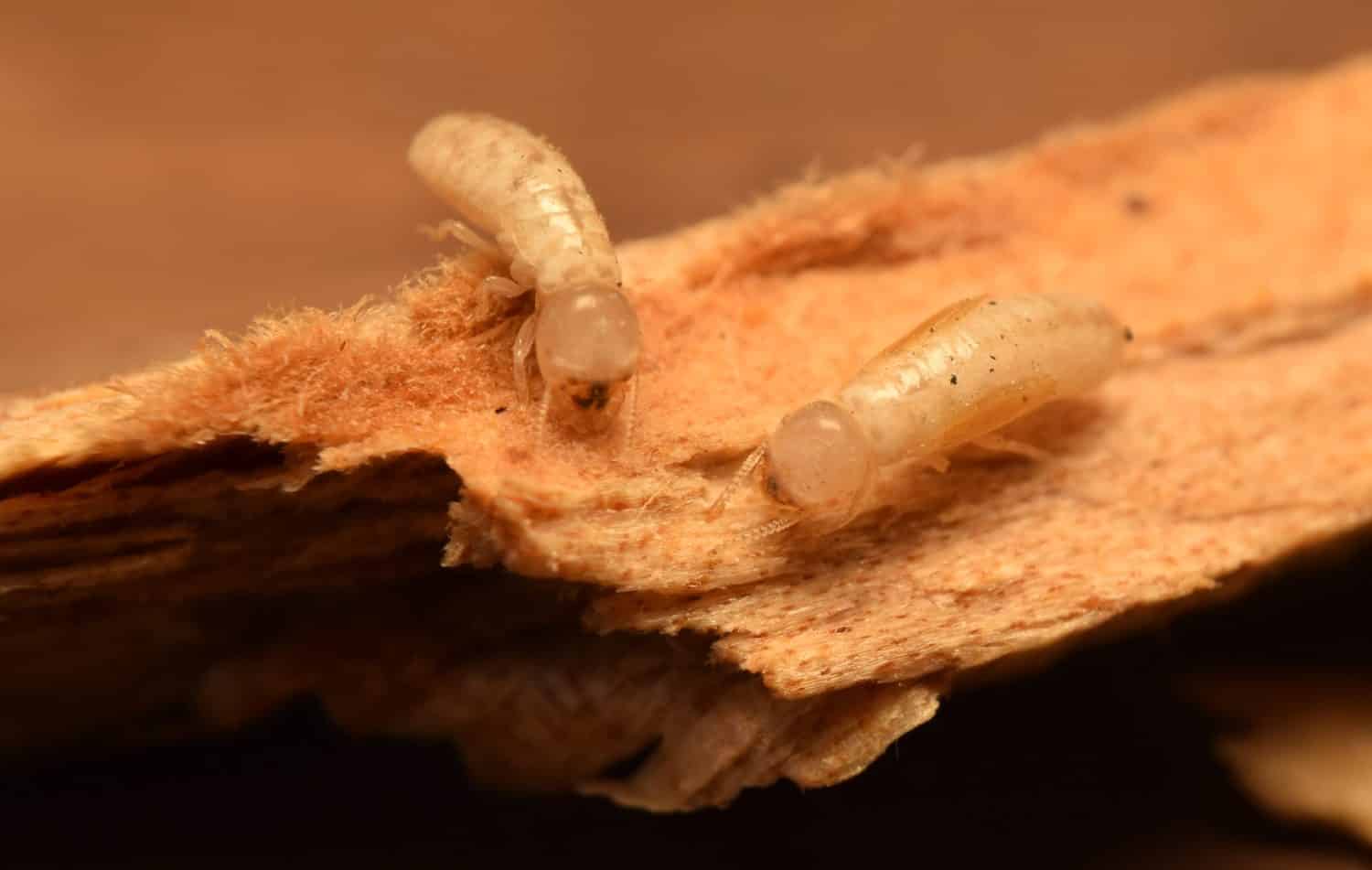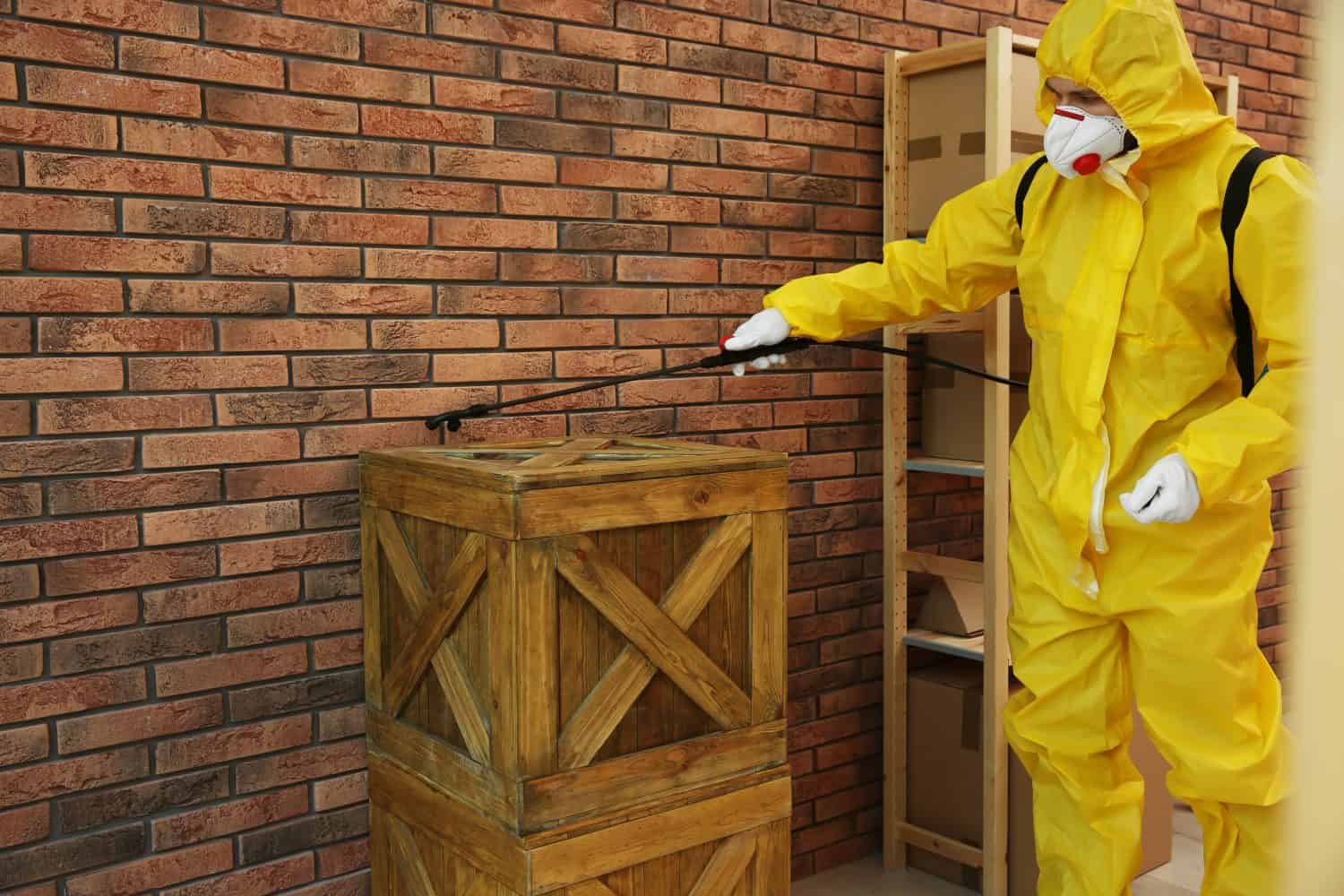Georgia offers a rich slice of history and green forests, making it one of the biggest tourist attractions in the country. Unfortunately, it is equally well known for the massive termite population. With the high risk of termite infestations, preparing for the worst is the only way to avoid severely expensive repairs. Let’s discuss some of the termites in Georgia and what you can do to reduce your risk of a thriving colony.
Types of Termites in Georgia
Within Georgia’s humid and warm state, you mostly come across three termite species – the eastern subterranean termite, the Formosan termite, and the drywood termite.
Eastern Subterranean Termite

The eastern subterranean termite is the most likely termite you’ll find across the entire North American continent.
©Jay Ondreicka/Shutterstock.com
The eastern subterranean termite is one of the biggest pests in Georgia and the rest of the United States. It destroyed wood aggressively, feeding on cellulose material. This material is found in more than just wood; it is also in significant buildings’ books, paper, cotton, and structural lumber. If a colony has time to mature, you face 20,000 to 5,000,000 worker termites. While this termite typically lives within the eastern states (including Georgia), they sometimes thrive as far west as Texas.
Formosan Termite

Formosan termites are one of the most aggressive termites in the world.
©vinit thongtue/Shutterstock.com
This termite species lives globally in the continental United States, Hawaii, and some parts of China. It got the same “Formosan termites” from introducing Taiwan, formerly Formosa. Many call them “super-termites” because they spread quickly and destroy wood rapidly. A colony can break down almost a pound of wood in one day, and any sturdy structure loses its stability within three months.
Drywood Termite

Drywood termites cover three separate species, though they all look relatively similar.
©gunawand3570/Shutterstock.com
Drywood termites include the traditional termites of the same name, dampwood termites, and subterranean termites. They have two sets of wings, though the front set is typically a little heavier. While the swarmers don’t maintain their wings, they are the easiest way to differentiate the dry wood termites from the eastern subterranean termites. They cause a substantial amount of damage. If you notice small pellets along windowsills or on the floor, this might indicate an infestation.
Where Are Georgia’s Termites?
The simple answer is everywhere. The termite population is alive and well in Georgia, especially in areas with older buildings. Coastal areas tend to be more humid, meaning homes along the beach, lakes, and rivers might experience higher odds of a termite infestation.
The least common termite species to find in Georgia is the dry wood termite because it typically lives near the coast. It also stays out of the busy Atlanta metro area because of the frequent traffic. However, homes in suburban or rural areas closer to the eastern coast are more susceptible to an infestation.
Identifying A Termite Infestation

If you see these winged creatures in your home, you can be sure that you are at risk of damage to your flooring and your health.
©CGN089/Shutterstock.com
If you aren’t sure if there’s a termite problem in your home, look for wood that sounds hollow, sagging in floors, or crumbling wood. As the EPA explains, all these symptoms point to a growing termite issue that must be addressed quickly to avoid other damage. The termites that make their way into your home swarm and develop their colony. If you see these winged creatures in your home, you can be sure that you are at risk.
Georgia termites typically appear in spring and at the start of summer because of the warmer weather. Unfortunately, you may not know until their numbers are beyond your control. Getting professional assistance is the easiest way to leave the colony undisturbed so the damage doesn’t spread.
Health Risks Of A Termite Infestation
Though the more significant concern is that termites damage property, they pose a small risk to humans. Fungal infections, allergic reactions, and asthma are common health symptoms of an infestation. If you sit on furniture with termites, termites also bite and sting. The bites aren’t toxic, but they are mildly painful. Some people contract infections at the site of the bite. Make an appointment with your doctor if the site gets worse.
Preventing Termite Infestations

Preventative care is the only way to effectively get ahead of a termite infestation.
©New Africa/Shutterstock.com
No one wants to deal with the aftermath of allowing a termite infestation to continue. The best prevention is to treat the home before the termites ever become an issue. Schedule appointments during the warm months when new colonies make their way into homes. Without adequate protection in Georgia, termites make themselves at home.
If this preventative effort isn’t enough to keep termites out of your home, contact a local pest control company to contain the damage they cause. The bait system varies with each company, but their services ensure that your termite infestation dissipates as quickly as possible. Many pest control companies offer free inspections in Georgia homes to manage this population.
The photo featured at the top of this post is © Oasishifi/Shutterstock.com
Thank you for reading! Have some feedback for us? Contact the AZ Animals editorial team.






